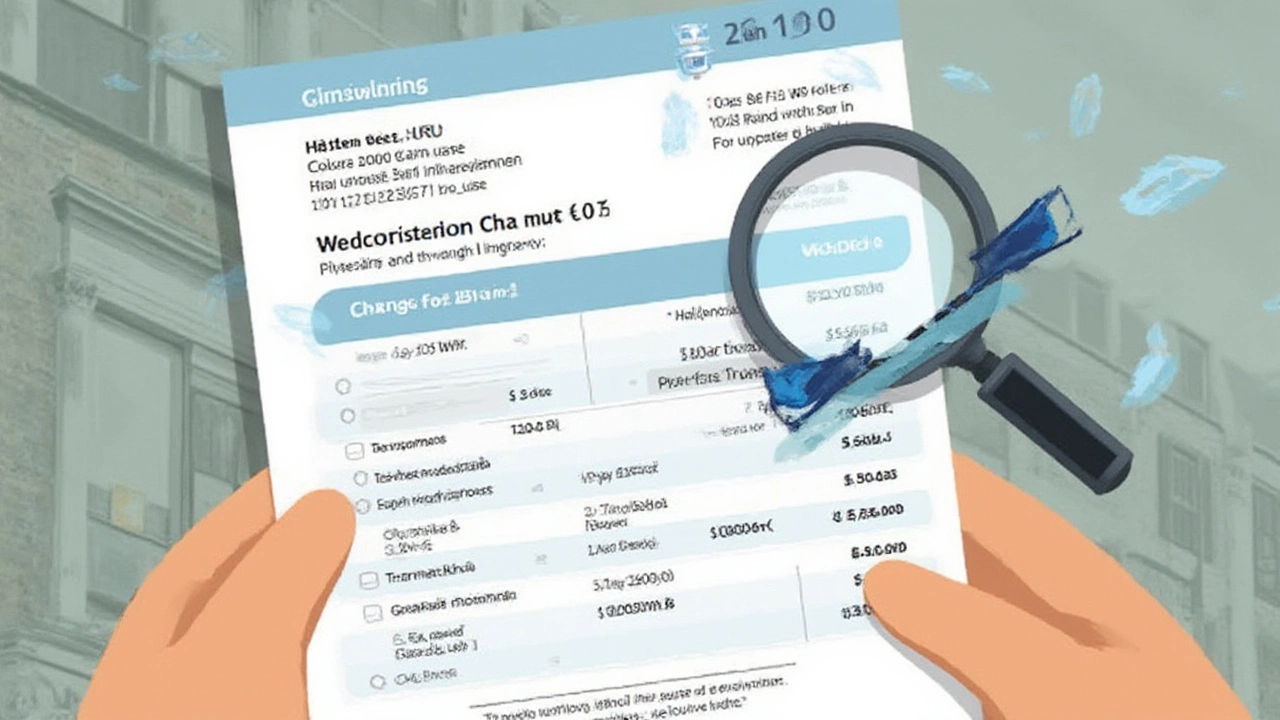If you’ve ever wondered why your neighbor’s windows catch the morning sun just right while yours look a shade duller, you’re not alone. People underestimate how much difference clean glass makes—until that first sparkling post-cleaning shine hits. But here's the real kicker: what’s the fair price for getting your windows spotless? With prices jumping around post-pandemic, trying to figure out if you’re getting a deal or being overcharged has never been trickier. Let’s clear the fog (see what I did there?) and get real about what the best price for window cleaning looks like in 2025—and what you should actually expect to pay.
How Much Does Window Cleaning Cost in 2025?
Window cleaning prices haven’t played it safe over the years. Since 2021, costs have shifted for everything from materials to labor, and in some cities, the difference is wild. On average, you’ll see prices in the US ranging from $110 to $210 for a standard two-story home with about 20-25 windows. But don’t just go by averages—prices swing lower or higher depending on where you live, the kind of windows you have, accessibility, and even whether you need inside or outside cleaning.
Here’s a typical pricing table to give you a clear idea of what’s normal in 2025:
| Type of Home | # of Windows | Inside & Outside | Average Price (USD) |
|---|---|---|---|
| Apartment | 10-15 | Yes | $65 - $100 |
| Townhouse | 15-20 | Yes | $110 - $140 |
| Single-Family (2-story) | 20-25 | Yes | $140 - $210 |
| Large Home (3+ stories) | 35+ | Yes | $240 - $400+ |
You’ll notice the jump for larger or harder-to-reach homes. Some pros charge by the pane ($3.50 - $7 per pane) or by the hour ($45 - $75+), so always ask how they structure their pricing. And if someone quotes you under $50 for a full house, red flag—it’s probably a rushed job or not a legit operation.
What Affects the Price: Factors You Can’t Ignore
Pricing isn’t just about counting windows. Pros will size you up (or your house, anyway) before tossing a number your way. Here are the things that really tip the scales:
- Window Size and Number: More windows mean more work. Big bay windows cost extra because of the extra glass and tricky angles.
- Accessibility: Second and especially third-story windows, or those above a conservatory, need ladders or poles—expect to pay more.
- Type of Windows: French panes, storm windows, sliders, or anything with lots of grills mean more work as each section gets cleaned separately.
- Condition: If your windows haven’t seen a squeegee in years, baked-on crud and paint spots jack up the price for first-time cleans.
- Regular vs. One-Off Cleaning: If you get on a schedule (every 4-8 weeks), you’ll likely score a discount compared to just calling when you remember.
- Extras: Tracks, screens, or hard water stain removal? These are rarely included in the basic quote. Expect $2–$5 extra per screen, for instance.
- Season and Local Demand: Spring and early summer are peak times. Some pros charge a bit more since everyone’s thinking about sun and curb appeal.
It’s not unusual for pros to pop on site and adjust their quote after looking at the real deal. Don’t be shy about asking what’s included—and if there’s anything that’ll cost you more at the end.

Common Pricing Methods: Which Works Best for You?
Window cleaning companies love their math, but not all use the same playbook. Here’s how you’ll usually be billed:
- Per Window/Pane: Easiest for smaller jobs. If your home has a grid of little panes, this can add up fast.
- Flat Rate: Good for houses with typical layouts—easier to budget, but check what “standard” means to them.
- Hourly Rate: If there are a lot of unknowns (old windows, awkward spots), hourly makes sense. Just remember, slow workers cost you more.
- Package Deals: Look out for services that throw in extras—screen cleaning, sill wipe-downs, maybe gutter checks. These sometimes save money if you need more than just glass wiped.
For small apartments, per window or hourly might be fine. For multi-story homes or regular cleans, a flat rate or package keeps costs predictable. Always get the total price in writing—some get creative with surcharges, so look out.
If environmental impact matters to you, check if they offer eco-friendly soaps. Some green options are just a dollar or two extra, and you won’t get whiffs of harsh ammonia after the pros leave. Clean and fresh? Win-win.
Tips for Getting the Best Bang for Your Buck
No one likes overpaying for a job, but cheap isn’t always smart. Here’s how you get real value:
- Get Multiple Quotes: Three is the magic number. Don’t feel bad comparing. Try to get quotes in person or over video so there’s no confusion.
- Check Reviews—Not Just Price: A pro with a solid track record is worth an extra $20 for no streaks or missed spots. Look for pictures, too.
- Bundle Up: Need gutter cleaning or solar panel washing? Companies often do combo deals.
- Go Regular: If you get your windows cleaned every 8 weeks, ask for a recurring customer discount. Many throw in 10-15% off just for scheduling.
- Bring Your Neighbors: Small companies love block bookings—get together with a neighbor or two and ask for a group rate.
- Time It Smart: If you’re not picky, book during off-peak months (late fall or winter). Pros often fill slow weeks with discounted slots.
Another tip—clear the area before the crew shows up. Move furniture, trim back bushes, take out screens, and you might get a little break off your bill since you’re making their job easier. Plus, less risk of the wrong lamp meeting an untimely end.

When Paying More Actually Makes Sense
This is where folks trip up. The cheapest window cleaning price isn’t always the best deal. If you’re in a high-rise, or your windows have historic lead glass, you want someone trained and insured handling the job. About 15% of all household accidents involve ladders—that’s not something you want a rookie learning in your living room.
Pros with proper insurance and safety gear will cost $20-30 more per job, but if something goes wrong, you’re not left footing a bigger bill. Companies using purified water systems (no streaking minerals left behind) or telescopic poles can work faster and cleaner—a little pricier, sure, but you’re paying for a better result, not just speed. Even gears like carbon fiber extension poles or hot water fed systems up the game and are worth the fee if your home’s tricky.
It’s also worth paying more if you’ve got wildlife nearby—wasp nests, nesting birds—or live near a main road with gritty pollution. Pros who spot these issues and work around them safely save you headaches in the long run.
Finally, there’s peace of mind. Quality cleaners don’t rush. They’ll wipe down sills, check screens, spot little problems, and leave your glass looking nearly invisible. If your windows are a pain to keep clean, spending a bit extra once or twice a year often costs less—and causes less frustration—than weekly DIY battles.
Here’s one quick clue to high standards: Ask if they guarantee their work. Most reputable companies will offer to fix streaks or missed spots within 24 hours at no extra charge.
Don’t be afraid to hire a pro who’s clear and upfront about costs, insurance, and schedules. Treat it like a haircut: You could do it yourself for free, but it probably won’t look as sharp, or last as long.
